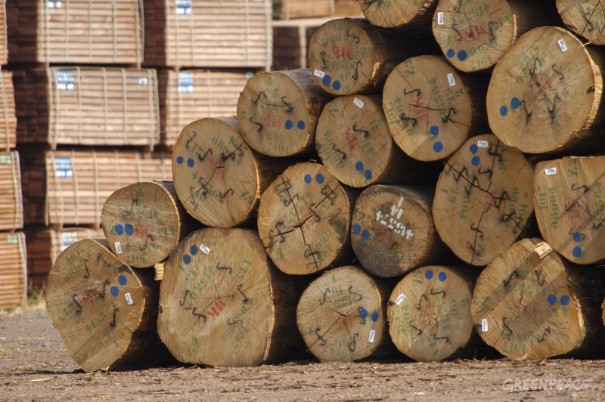In East Asia, we have already lost much of our natural forestlands, while our demand for paper, agricultural products, timber, and meat is driving the destruction of the world’s last ancient forests in Indonesia, the Amazon, and the Congo.
Every two seconds, an area of forest the size of a football pitch is lost to logging or destructive practices. Through agriculture and logging, mining and climate change, humans are wiping out irreplaceable forests – and the life that depends on them – at a terrifying pace.
We are losing not only our primeval forests, which regulate our climate and water resources, but also the amazing range of species that call them home. Indigenous peoples are pushed out as companies move in to destroy their ancient homes. It is estimated that almost 1.6 billion people around the world rely on forests to earn a living, and 60 million indigenous people depend on forests for survival.
China’s disappearing forests
Only 3.34% of China’s forests remain intact. The rest are threatened by plantations: in Hainan and Yunnan, for example, indigenous trees are felled to make way for fast-growing eucalyptus plantations, which are used to make paper pulp.
Unfortunately – though they both contain trees – plantations and ancient forests are not the same in terms of ecology. Ancient forests are crucial to biodiversity and provide habitats for many native species of animals and plants. They also store millennia-worth of carbon, which is released as carbon dioxide (a greenhouse gas) when the trees are logged.
Global Deforestation
Mainland China, Hong Kong and Taiwan also play a role in driving the destruction of ancient forests in other parts of the world, particularly the Paradise Forests, one of the last remaining rainforests in Indonesia and Papua New Guinea.
China is now the world’s second largest consumer and importer of wood products, according to the United Nations. Because China faces not only limited forest resources but also booming domestic demand, most of its timber for export and domestic use has to be imported. Unfortunately, illegal logging is rampant in the Paradise Forests of Indonesia and Papua New Guinea, as well as the Congo. With such high rates of illegal logging and lack of awareness, it is very likely that much of China’s imported timber comes from illegal sources.
Learn more about why illegal logging is a problem.
Industrial logging for timber and pulp and paper has devastated much of the world’s rainforests. Whole swathes of Indonesian rainforests and peatlands have been turned into paper pulp for toilet paper, tissues, magazines, and copy and print paper.
The global demand for palm oil (widely used in cosmetics and as a vegetable oil in food products), soy, and beef also drives massive rainforest destruction. China is the world’s second largest importer of palm oil, surpassed only in 2010 by India. Much of the Amazon has been burned to make way for cattle ranches and soya plantations, while Indonesian rainforests are cleared for palm oil. In this way, irreplaceable rainforests are destroyed to make toothpaste, chocolate and animal feed.
Deforestation and Climate Change
Today, forests face another threat. Deforestation contributes to climate change – accounting for one-fifth of all greenhouse gas emissions. It is Indonesia’s terrifying rates of deforestation alone that make this developing country the world’s #3 greenhouse-gas emitter, behind China and the US. Indonesia’s peatlands store 35 billion tons of carbon – and when they are drained and burned, all of this carbon returns to the atmosphere.
At the same time, climate change itself threatens forests on a terrifying scale.
Rising global temperatures damage and kill trees, and increase drought and forest fires. Dying trees release still more carbon, which further increases our global temperature. This cycle of forest collapse represents a critical feedback loop that could drive warming for centuries, change life cycles on Earth, and usher in a sweeping transformation of human civilisation. The surest way to stop it is to end deforestation.

